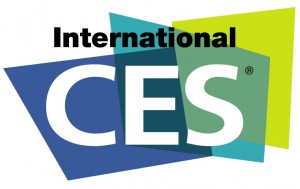sound bites from ces
I just returned from a great trip to CES, the Consumer Electronics Show.  There was a lot of excitement around new, innovative products and it seemed like important deals and connections were being made – it was an energizing way to start off the new year!
There was a lot of excitement around new, innovative products and it seemed like important deals and connections were being made – it was an energizing way to start off the new year!
I particularly enjoyed participating in some breakout sessions in the MommyTech and digitalHealth summits. It was there that speakers offered up a few sound bites containing wisdom – wisdom that extends beyond the world of consumer electronics and digital technologies.
Here’s what I heard:
“It’s not about the technology.” – Hyung Tai Kim, MD, Ascension Health – Vice President of Research
In a dialogue about how to encourage consumer usage of new digital healthcare products and services, Dr. Kim made this assertion quite matter-of-factly. His point was that people care about what the technology does for them, not about the technology itself.
This is so true – and not just in the technology sector. People will want to use any product or service if they understand and value what it does for them. Most food shoppers don’t know or care what amino acids are, but they are interested in products that help their muscles recover from exercise and sports. Most automotive buyers don’t care how HEMI engines work, they only want to be able to accelerate faster. Leading edge consumers may be interested in how a product does what it does, but the mainstream simply wants to know what it does and why it’s important.
Manufacturers, somewhat by definition, are usually driven by their products. But developing products people want and selling them effectively requires adopting the consumer point of view. Particularly for truly ground-breaking innovations, companies shouldn’t assume consumers understand the value of their products. They need to connect the dots and educate and inspire people about what the products do for them.
As legendary Harvard Business School marketing professor Theodore Levitt put it, “People don’t want to buy a quarter-inch drill. They want a quarter-inch hole!”
“In electronics, we put more and more features on our products because we can.” – Natali Del Conte, Host, CNET TV
As Ms. Del Conte introduced her take on “What’s Hot at CES 2010,” she chided some companies for their products which seem over-loaded with features. Her sarcastic observation about how and why technology companies develop feature-saturated products struck a chord.
We’ve all encountered products with features that seem superfluous: the remote control that allows you to set up picture-in-picture viewing in 20 different ways; the microwave oven featuring functions that less than 1% of owners use; the pages and pages of DVR settings options. The problem with this overload of features is not simply that these features aren’t used and therefore add unnecessary costs to the product – it’s also that they make product usage more confusing. For many consumers, less is more.
Lately there’s been a movement in food and beverages to simplify products and reduce the number of ingredients used (Haagen Dazs Five is one example). Electronics manufacturers, as well as companies in other categories like insurance, sports equipment, cars, banking, etc., would do well to adopt a similar approach. A streamlined version of a product might broaden a brand’s appeal by appealing to people specifically looking for a simplified user experience – and/or it could be used to convert intimidated prospects who can be upgraded later to more feature-rich offerings.
A good way to start would be to conduct cost/benefit analyses on potential features during the product development process — not only counting development costs but also the costs of consumer confusion and frustration.
“When tech lets me down, I feel like a dummy and that’s an issue for the makers of that technology.” – Becky Worley, Good Morning America’s Tech Reporter/Producer and Contributor
As the mother of 2 year old twins as well as a technology correspondent, Ms. Worley offered great insights about what moms think and feel about consumer electronics. She described the negative effects of the “technology inferiority complex” that many women – and men! – have:
People want to feel smart and successful. Products that are hard to use, require a lot of time to figure out, or don’t work the way they’re supposed to not only disappoint users, they also make them feel dumb and incompetent. Such feelings cause a cognitive dissonance that ultimately results in negative brand perceptions.
Ms. Worley also talked about how moms are always picking up their kids – physically, when they’re young; emotionally, when they’re older. She called for brands to “pick up” moms – practically, by making products easy to use; emotionally, by demonstrating they understand moms.
Although Ms. Worley was talking about moms, I believe the desire to be understood and supported is universal to all consumers. Through ethnographic research and empathic design, companies can develop products, services, customer experiences, and advertising that really resonate with consumers.
Imagine the kind of affinity and loyalty a brand would attract if it makes people feel like heroes!
As you’ve doubtlessly noticed, there’s a common theme to all of these sound bites. It’s the importance of customer intimacy. Companies must truly understand their customers – what they want, how they feel, what they value, what their lives are really like. And they must demonstrate that understanding in everything from product development to marketing communications.
All of the cool new products and technologies at CES give reason to be optimistic about the coming year. But the fact is, only a few of the innovations will be great successes – the rest will be quickly forgotten or replaced by the next new thing. The ones that breakthrough are the ones fueled by customer intimacy.
related posts: